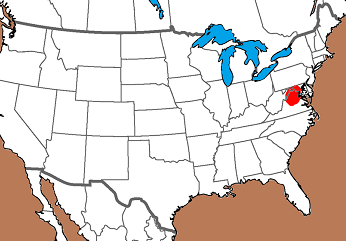Culpepper Hornfels
Description of Physical Characteristics:
Color:
Culpepper Hornfels range from a brown to reddish brown or greenish brown
and gray to black. Primarily homogenous, but can have many of the
same characteristics of the original stone.
Texture: Denes, hard medium to fine grain
Luster: Dull
Translucency:
Opaque
Silica Fabrics / Fossils:
Low silica content
Patina: There are three different patinas
based on the original type of stone. The first is that the stone
has an eroded surface, but retains the color and texture of the original
stone. Second is a thick buff color completely unlike the original
stone, third occasionally occurs is that the patina becomes darker
than the original stone. Pitting on the surface due to the eroding
of softer inclusions commonly occurs.
Heat Treatment:
Knapping: Produces a
semi-conchoidal fracture with sharp edges but tends to be very brittle.
Distribution:
Distribution Comments:
Culpepper Hornfels are created when shale, sandstone, or siltstone is
thermally metamorphosed, usually by magma. Primary outcroppings
occur in the Dulles Greenway in Loudoun County Virginia, but occur
throughout the Culpepper Basin of northern Virginia and Maryland.

Projectile point made from this material:
Pictures Provided By:
References: (See Reference Page, Entry Number):
Similar Material:
Commonly made projectile point from this material:
Archaeological Context:
This was a local material primarily used around the source area throughout
the Culpepper Basin. Rarely found outside of the basin.


